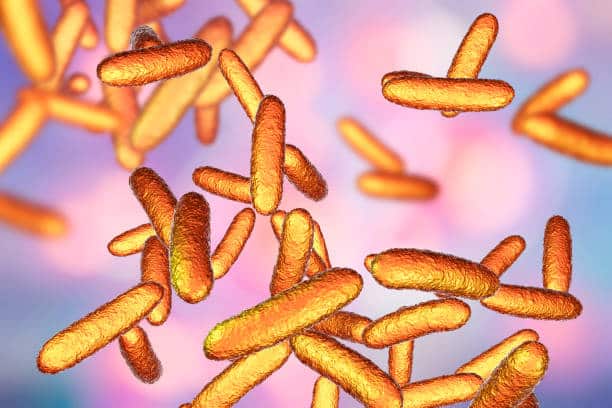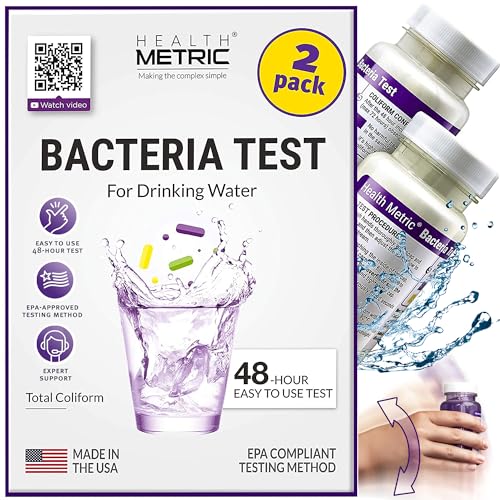Water in the natural environment is typically contaminated with a wide range of chemical and biological pollutants.
Table Of Contents
−- Coliform bacteria removal water filters
- HQUA Ultraviolet Sanitizer: Ultraviolet Water Sterilizers Systems
- Express Water ROALKUV10M UV Water Filtration: Reverse osmosis systems
- Aquasana Rhino 5-stage filter: Whole House Multistage
- Berkey gravity-fed countertop filters: Gravity Fed Filters for Coliform Bacteria
- Aquasana clean water machine: Powered Filtration
- Aquasana clean water machine: Dispenser
- Aquasana clean water machine: Distiller
- What are coliform bacteria?
- How do coliform bacteria get into a water supply?
- Is coliform bacteria harmful to my health?
- How are coliform bacteria identified?
- How much coliform bacteria should be in my water?
- How do I get coliform bacteria out of my drinking water?
When water is extracted from its natural environment and used for drinking water, such as well water, it must be free of organisms that can cause illness. Coliform bacteria are among the most frequent drinking water pollutants, particularly in rural water systems.

Coliform bacteria removal water filters
HQUA Ultraviolet Sanitizer: Ultraviolet Water Sterilizers Systems
This clever device sterilizes water without the use of chemicals or pressure tanks.
Bacteria, viruses, protozoa, and algae parasites are killed as the water passes past the rod outfitted with a UV ray.
Before they reach the drinking water, 99 percent of bacteria are killed. The remaining 1% that aren’t killed have their DNA altered by the light, making them unable to multiply and infect your drinking water as it travels through the pipes.
Express Water ROALKUV10M UV Water Filtration: Reverse osmosis systems
This is one of the most dependable water purification systems I’ve ever seen. Most water filters I’ve seen only have up to six stages. This unit contains eleven ingredients that provide modern families with the safest, purest, and cleanest water possible.
I like how this system combines reverse osmosis and UV light. The coliforms and other disease-causing organisms are killed by ultraviolet light, while the RO element seals them within a chamber. So never again will one have to be concerned about TDS, medicines, new pollutants, and other chemicals in the water.
One disadvantage of a RO system is that it eliminates everything, even beneficial minerals. However, I am pleased with what the manufacturer has provided in this unit. Its alkalizing element adds healthful components to drinking water, making it enjoyable for everyone.
I like the extra faucet, which has a flow rate of 0.8 gallons per minute. Its leak detection technology is also a plus, sparing households the trouble of regularly monitoring the integrity of their water treatment system.
Aquasana Rhino 5-stage filter: Whole House Multistage
This filter with UV is the best and most efficient whole-house filter that does not employ reverse osmosis. In addition, it contains a pre-separation system that removes silt and sediment that can damage your appliances.
The middle stages will purify your water without removing beneficial minerals and prevent bacteria growth within the filter. Then, a UV filter destroys any bacteria or other VOCs that may have survived the previous stages.
Berkey gravity-fed countertop filters: Gravity Fed Filters for Coliform Bacteria
The gravity-fed filter by Berkey, which stands on a counter and filters water through several media types, is probably the most basic technology. As a result, you can eliminate coliform bacteria and heavy metals, medicines, pesticides, fluoride, arsenic, and many other contaminants.
They do not require any installation or power. Pour the water into the top and allow it to filter down to the spout, from which you may fill your glass or pitcher. This is the best option if you lose electricity because it can be used entirely off the grid.
Ceramic filters can remove silt, germs, and other organic microbes from your water. It can filter down to.5 microns while still allowing vital trace minerals to pass through.
Activated carbon is the next level. The charcoal absorbs volatile organic compounds (VOCs), chloramine, chlorine, and chemicals, allowing the water to pass through.
Finally, a nanometal similar to silver is used to eliminate heavy metals and prevent bacteria from multiplying that may have gotten through the ceramic layer.
Aquasana clean water machine: Powered Filtration
The Aquasana Clean Water Machine is another countertop filter that functions similarly to a gravity-fed filter but significantly better.
It is significantly more adaptable than a standard gravity filter. To start with, the water filters significantly faster. With this filter, you get 0.5 gallons per minute, filling your pitcher in less than a minute. And you can watch it fill up on its own.
Another advantage is that it runs on electricity, making it considerably more efficient. In addition, it plugs into any kitchen socket and requires no installation.
This is also highly versatile. It takes up a fraction of the space of a Berkey filter, and the pitcher can be removed and stored in the fridge. But, of course, you can also do so if you prefer having a dispenser on the counter.
Aquasana clean water machine: Dispenser
The Epic Nano is a small, portable coliform filter employing gravity filtering to remove 99.999 percent of over 200 common drinking water pollutants. The Epic Nano is a beautiful alternative if you have a limited budget or want the convenience of a filter that requires little setup and can be taken with you on the move.
The Epic Nano filters away bacteria such as E-Coli, Legionella Pneumophila, Hepatitis A, and Salmonella, as well as viruses and cysts such as Giardia and Cryptosporidium. In addition, the filter removes heavy metals such as lead, pesticides and herbicides, chlorine, and other contaminants.
The Epic Nano has a very average filter lifespan for a countertop gravity filter, lasting 150 gallons or 3 to 4 months. It has a capacity of half a gallon and is made of clear, BPA-free plastic.
Aquasana clean water machine: Distiller
The Waterwise 4000 is one of the most successful distillers for removing contamination-causing organisms such as viruses and coliforms. While UV disinfection destroys coliforms and filtering systems minimize them, distillers like Waterwise merely heat water to boiling temperature, causing it to evaporate and leaving coliforms in the boiling chamber.
There are multiple distillation steps, but you don’t need to understand them to enjoy the Waterwise 4000. Instead, pour well or city water into the boiling chamber from your faucet, click “start,” and leave the machine to do its thing.
When water evaporates in this distiller, it flows through a tube and into the glass water collector, where it condenses and forms water droplets once more. Most pathogens that cause pollution in wells and other water sources, including coliform bacteria, cannot take on a gaseous form. This implies that the coliform bacteria remain on the surface of the boiling chamber and can be rinsed away after the distillation process is finished.
The Waterwise 4000 can produce 1 gallon of 100 percent steam distilled water in 4 hours, which is very decent if you’ve done your study on distillers. In addition, it removes E-Coli fecal coliform bacteria from water and practically every other contaminant particle in water because most of them cannot take on a gaseous form.
What are coliform bacteria?
Coliform bacteria are a group of 16 bacterium species that are used to determine the quality of water. These species are divided into total coliforms, fecal coliforms, and E. coli.
- Total coliform is a catch-all term for the germs tested for coliform testing. The presence of total coliform shows that soil, plants, or animals have contaminated your water source. However, total coliform is not always hazardous. The majority of coliform species do not affect human health. On the other hand, total coliform is a warning indicator that other disease-causing organisms may contaminate your water supply.
- Fecal coliforms are a subset of coliforms in general. These coliform bacteria generally are found in the feces of warm-blooded animals, including humans. Fecal coliforms can reach your water supply via a failed septic system or runoff water contaminated by livestock or crops. Therefore, you should immediately switch to bottled water if your water includes fecal coliforms. Fecal coliforms may not always indicate the presence of dangerous infections, but they do indicate a significant risk.
- E. coli is the most reliable indicator of waterborne illness contamination. As a result, if your water includes E. coli, you should immediately switch to bottled water. This coliform bacterium, Escherichia coli, is usually harmless, except for a few dangerous strains. Infection symptoms include cramps, abrupt and severe diarrhea, tiredness, and fever. Possible consequences are anemia, urinary tract infections, respiratory sickness, pneumonia, kidney failure, and death.
How do coliform bacteria get into a water supply?
Coliform bacteria are usually found in surface water sources such as lakes, rivers, ponds, streams, and wells. Coliform bacteria are frequently introduced into surface water sources when rains wash animal excrement into the water.
Cattle and other livestock may defecate directly into minor streams that flow into larger rivers and lakes. When human sewage treatment systems fail to disinfect the sewage before it is discharged adequately, coliform bacteria are sometimes spilled into natural rivers.
Coliform bacteria can enter a well water supply in a variety of ways. For example, rainwater may wash animal feces into a well if a good cap is below the surface level. If a good casing is cracked or built incorrectly, contaminated groundwater may enter the well below the surface level.
When the casing is damaged or a septic system weeping bed is too close to the well, very high coliform levels may be detected in the water.
Is coliform bacteria harmful to my health?
Several coliform bacteria are capable of causing sickness in humans. E. coli is an excellent example of this. In addition, the presence of coliform bacteria indicates fecal contamination of the water supply, which could indicate other, more harmful species like intestinal parasites.
How are coliform bacteria identified?
A coliform bacteria test is pretty simple in North America and is often provided for free or at a low cost in many countries. After running the water in the house for a few minutes, a sample of water is collected and placed in a container containing a bacterial preservative.
This sample is then immediately transported to the laboratory. The sample is placed in a petri dish with bacteria food.
This petri dish is then kept at a warm temperature to encourage the rapid growth of the bacteria. A big colony will now exist wherever a single microbe was previously present. These colonies have been counted. A coliform bacteria test results are typically presented as CFU/100ml, which translates to “colony forming units per 100 milliliters.”
How much coliform bacteria should be in my water?
The answer to this question is – absolute zero. However, the number of coliform bacteria allowed in drinking water differs by jurisdiction. For example, water is considered safe in some parts of North America if it contains fewer than 5 CFU/100mL.
On the other hand, as can be seen here, the US Environmental Protection Agency has a maximum contamination limit of zero for coliform bacteria.
How do I get coliform bacteria out of my drinking water?
There are various methods for removing bacteria from your water, including coliform. However, a UV System is the easiest, most cost-effective, and most successful option for a household to safeguard their water supply from harmful microorganisms.
A UV system consists of a metal cylinder containing a UV lamp. Water passes through the steel chamber, exposing any bacteria to intense levels of UV light. This radiation destroys the germs, rendering them inert.

Jay
Jay is a health and wellness enthusiast with expertise in water quality and nutrition. As a knowledgeable advocate for holistic well-being, Jay successfully manages Type 2 Diabetes through informed lifestyle choices. Committed to sharing reliable and authoritative insights, Jay combines firsthand experience with a passion for enhancing health."








